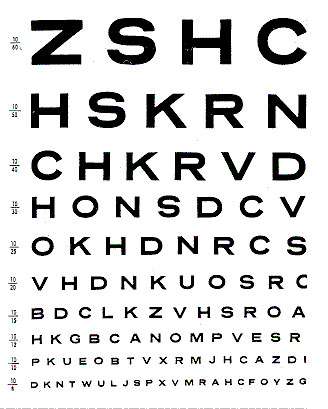Presbyopia
March 12, 2011 at 9:58 PM by Dr. Drang
I’m really nearsighted. Arm’s length is way too far away for me to see clearly without correction. But I’m content in my nearsightedness; I’ve been wearing glasses or contact lenses since third or fourth grade, and it’s just part of who I am.

The middle-aged farsightedness, presbyopia, that’s pushed its way into my life is another matter. I hate it.
Seven or eight years ago, I realized I just couldn’t read easily any more, so I got some reading glasses. I was using contacts to correct the nearsightedness at the time, and I figured having a cheap set of readers at home and at the office would be a simple solution to the reading problem.
I soon learned that I do a lot of reading in places I hadn’t thought about. As my close vision deteriorated, I found that I couldn’t read package labels at stores or menus at restaurants. Which meant I had to carry a set of readers with me.
To hell with this, I thought. Why carry glasses around in my pocket when I’m perfectly happy with them sitting on my nose? I’ll just go back to glasses and get a set with progressive lenses. “Progressive lenses,” for you youngsters out there, is the PC way of saying “bifocals.” Our parents and grandparents had bifocals; we have progressive lenses. The difference: no line across the center of the lens to let everyone know how old you are.
The problem with getting progressive lenses in your early 40s is that their correction in the lower half is fixed while your presbyopia is likely to be advancing rapidly—it certainly was in my case. Within a year, I was back to having trouble reading. With glasses costing $600-700,1 I was loathe to just toss them away and get another pair. So I lived with poor close vision until it seemed reasonable to get another pair.
The optometrist said that the advance of presbyopia often slows down in your late 40s, so I got another set of progressive lenses with a stronger correction in the lower half (my nearsightedness correction has been almost unchanged since college). Turns out I wasn’t in the “often” part of the population; my close vision continued to degrade, and within a year or so I couldn’t read comfortably with the new glasses, either.
I was able to do certain close work, though. With my glasses off, I could see really well at distances of 8-10 inches, so I found myself often switching between glasses and no glasses. Which is a lot like using reading glasses, except the on and off are reversed.
Convinced that my close vision isn’t going to stabilize any time soon, last week I switched back to contacts for the nearsightedness and astigmatism corrections, and I’m in the process of figuring out what strength readers I need for various tasks.
Sitting here at my laptop, readers with a 1.50 correction seem about right. At my desktop machine at work, where I’m a bit farther from the screen, a 1.25 correction works better. Reading a book is OK with the 1.50s, but 1.75s would probably be more comfortable. And I have a pair of 2.50s for really close work. Soon I’ll be like Fred Sanford—a reference you won’t get unless you’re old enough to need reading glasses.2
By the way, the strength of reading glasses is measured in diopters, which is the reciprocal of the focal length in meters. A pair of readers labeled 1.00 will focus at a distance of 1 meter, a pair labeled 2.00 will focus at 50 centimeters, and so on. Since 40 centimeters (16 inches) is a comfortable distance for holding a book, you might think a pair of 2.50 readers would be needed, but that would only be true if your presbyopia was so advanced that your eyes couldn’t do any of their own focusing.
One bright spot in this tale of decay and decrepitude is that with the right set of reading glasses the small pixels on this MacBook Air aren’t nearly as troublesome as they used to be.
-
Progressive lenses are expensive. Plus I need an astigmatism correction. And an antiglare coating. And a high refractive index plastic so the lenses don’t weigh a pound each. And a hardening coating because the plastic scratches easily. ↩
-
Because I’ve been spending time at the reading glasses rack at my local Walgreen’s, I see that Raquel Welch is Foster Grant’s reading glasses spokesmodel. Another age-specific cultural reference. ↩
